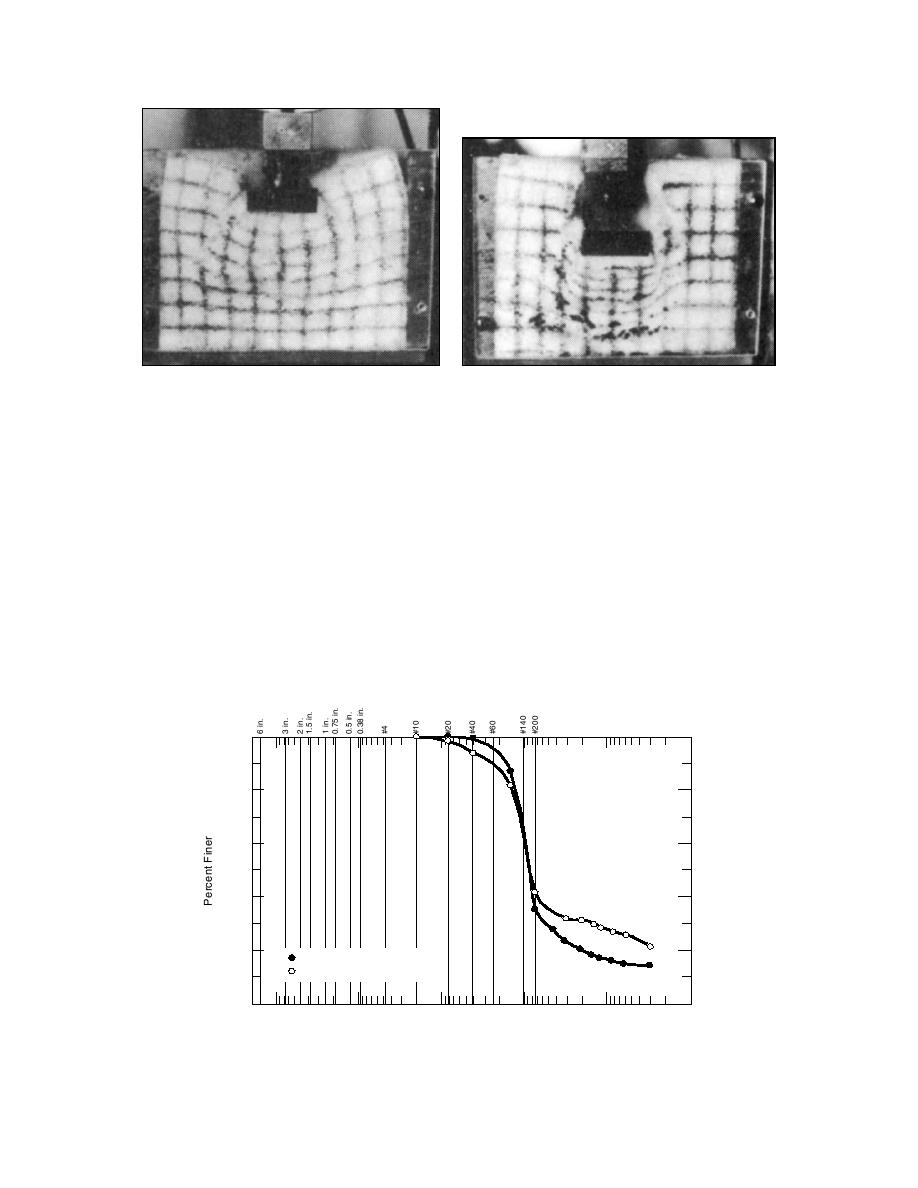
a. At 0.097 mm/s.
b. At 0.98 mm/s.
Figure 32. Deformation of fresh snow under a plate. (From Fukue 1979.)
Soil model
and wet. However, the compacted McCormick Ranch
sand model is useful for simulating a vehicle on an
The material model used for the wheel-on-soil
unpaved secondary road under good (summer) road
simulation was also a DruckerPrager cap plasticity
conditions.
model. Initially a very soft thawing soil was to be
The mechanical behavior of the McCormick
simulated, but the testing of the soil parameters be-
Ranch sand was documented by Mazanti and Holland
came quite extensive and will be completed in the
(1970a, 1970b), and material parameters for a modi-
future. A compacted sand material called McCormick
fied DruckerPrager cap model were developed in
Ranch sand was used for initial modeling.
DiMaggio and Sandler (1971) and implemented in
McCormick Ranch sand is a clayey sand, classified
ABAQUS (HKS 1996). The material parameters are
as SC, from Albuquerque, New Mexico, and is simi-
given in Table 4, and the cap hardeningsoftening
lar in grain size distribution to the Lebanon sand used
behavior is defined using the piecewise linear ap-
in mobility experiments on frozen and thawing soils
proach given in Table 5. The material model yields
at CRREL (Fig. 33). The McCormick Ranch sand
excellent comparison to uniaxial strain test results
was tested in a compacted state, whereas soils that
(Fig. 34).
have been subjected to freezethaw are usually loose
100
80
60
40
20
Lebanon Sand (SM)
McCormick Sand (SC)
0
200 100
10
1
0.1
0.01
0.001
Grain Size (mm)
Figure 33. Grain size curves for McCormick Ranch sand (Mazanti and Hol-
land 1970a) and Lebanon sand (Shoop 1990, 1993a).
22



 Previous Page
Previous Page
